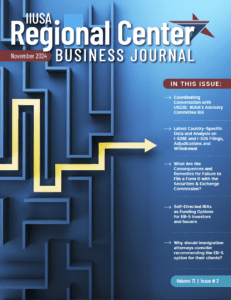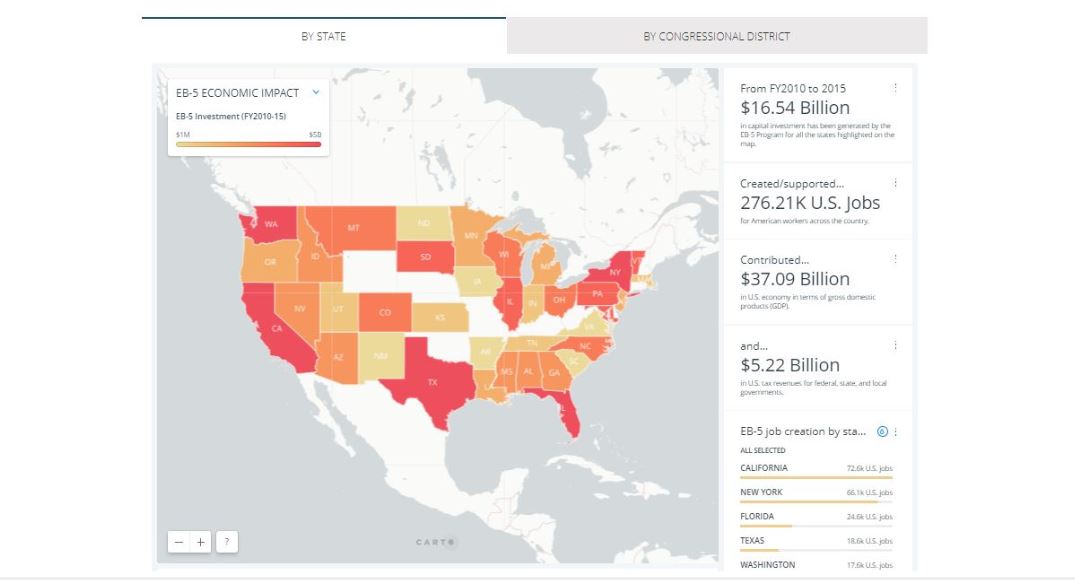The EB-5 Regional Center Program (the “Program”) was created by Congress in 1992 with the intent of stimulating economic development across U.S. communities through capital investment by foreign entrepreneurs. A variety of economic impact studies have been conducted, both by academics and government agencies, to assess the Program’s impact on the U.S. economy. In 2013, IMPLAN Group found that capital investment through the Program contributed over $2.6 billion to U.S. gross domestic product (GDP) and created or supported 33,000 American jobs during fiscal year (FY) 2010 and FY2011. Furthermore, in January 2017, the U.S. Department of Commerce released its assessment on the investment and job creation impact of the EB-5 Program, concluding the Program accounted for almost 170,000 U.S. job creation between FY2012 and FY2013.
In January 2018, Western Washington University Center for Economic Business Research (CEBR) published peer-reviewed research that evaluated the Program’s economic impact in FY2014 and FY2015, the latest economic impact study provides valuable insights into the Program’s growth and economic contribution over that two-year period.
Key findings from CEBR’s EB-5 economic impact study include:
- $11.2 billion in capital investment was generated through EB-5 Regional Center projects in FY2014 and FY2015, accounting for 2% of the total foreign direct investment (FDI) net inflows to U.S. between 2014 and 2015.
- Investment and spending associated with the Program supported 207,000 American jobs in FY2014 and FY2015, accounting for 4% of total job growth across all private sectors in U.S. over that two-year period.
- $33.6 billion was contributed to the U.S. economy by capital investment and related spending of the Program in FY2014 and FY2015.
- The Program generated $4.2 billion in tax revenues for federal, state, and local governments between FY2014 and FY2015.
- The $2.7 billion federal tax revenue contributed by the Program is equivalent to 634% of the total amount of appropriations that the federal government made for economic development programs though the U.S. Economic Development administration (EDA) between FY2014 and FY2015, all at no cost to the U.S. taxpayer.
The table below that summarizes the profound impact of the EB-5 Program on the U.S. economy from FY2010 to FY2015:
Helpful Resources
- EB-5 Economic Impact Studies & Interactive Map, IIUSA: https://iiusa.org/eb5-economicimpactmap/
- Quantitative Assessment Of The Eb-5 Program: Economic Impacts And Contributions To The U.S. Economy 2014-2015, Western Washington University: https://cbe.wwu.edu/files/2014-15%20EB-5%20Economic%20Impact%20Report.pdf
- Estimating the Investment and Job Creation Impact of the EB-5 Program (FY2012-2013), U.S. Department of Commerce: http://www.esa.doc.gov/reports/estimating-investment-and-job-creation-impact-eb-5-program
Download EB-5 Economic Impact Factsheet in PDF










